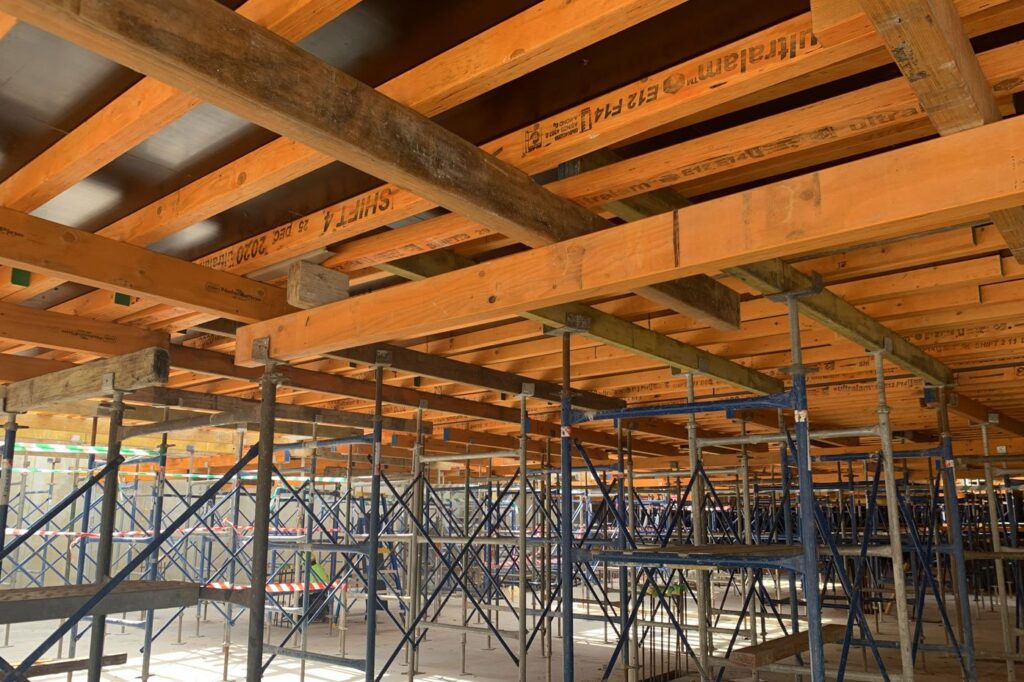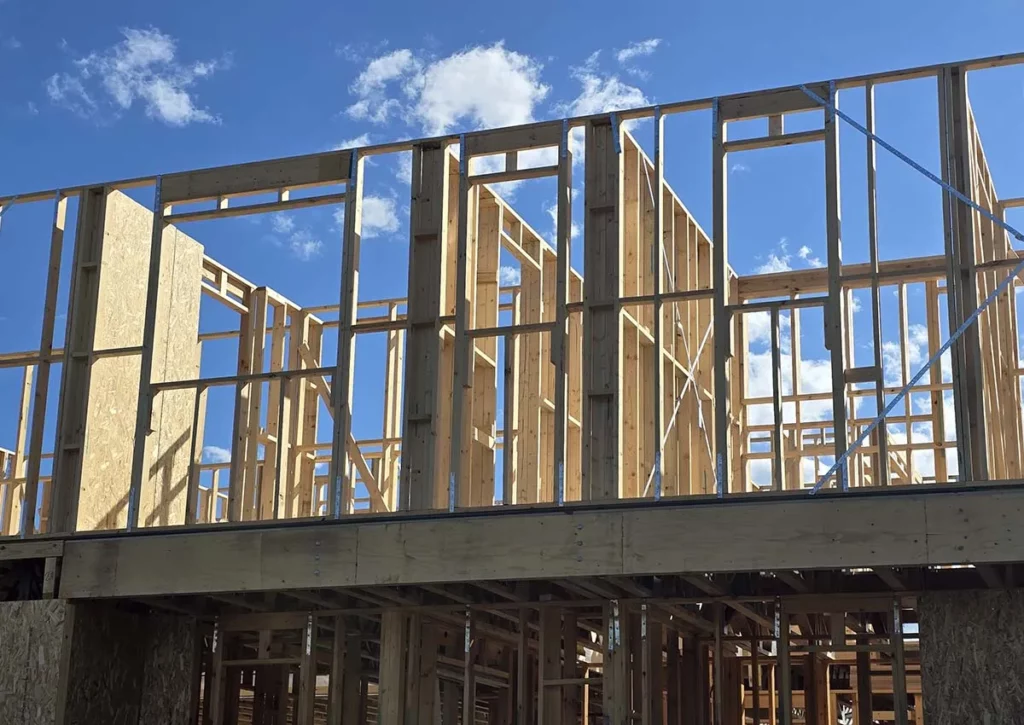LVL formwork timber is a crucial element in construction projects, and its prices have a significant impact on budget planning and overall project costs. To effectively manage construction budgets, it is essential to understand the nature of LVL formwork timber, its manufacturing process, pricing structure, and the role it plays in construction projects. In this article, we will explore these aspects and examine the potential benefits and drawbacks of using LVL formwork timber. Additionally, we will discuss strategies for managing LVL formwork timber costs and make future predictions for its prices and their impact on construction budgets.
Understanding LVL Formwork Timber
What is LVL Formwork Timber?
Laminated Veneer Lumber (LVL) formwork timber is a type of engineered wood product commonly used in the construction industry. It is made by bonding together multiple layers of thin wood veneers using adhesives. The resulting product offers enhanced strength, stability, and durability compared to traditional solid timber.
Future market predictions for LVL formwork timber prices suggest a continued upward trend due to increasing demand and limited supply. As sustainability and eco-friendly construction practices gain prominence, the demand for LVL formwork timber is expected to rise further.
LVL formwork timber is highly versatile and can be used in various construction applications, such as concrete formwork, beams, joists, and scaffolding. Its uniform composition and predictable performance make it a preferred choice for projects that require reliable and robust structural components.
The Manufacturing Process of LVL Formwork Timber
The manufacturing process involves peeling or slicing logs into veneer sheets, drying them to a specific moisture content, and then arranging and bonding these layers together in a cross-grain configuration. This cross-grain arrangement helps distribute loads evenly, minimizing the risk of warping, splitting, or cracking.
During the bonding process, heat and pressure are applied to ensure a strong and durable final product. Manufacturers may also use different adhesives, depending on the intended use and environmental considerations.
Quality control measures are implemented throughout the production process to ensure that the LVL formwork timber meets industry standards and specifications. This includes regular testing for strength, dimensional stability, and adhesive performance. By adhering to strict quality control protocols, manufacturers can guarantee the reliability and consistency of their LVL products.

The Pricing Structure of LVL Formwork Timber
Factors Influencing LVL Formwork Timber Prices
Several factors contribute to the pricing of LVL formwork timber. These include raw material costs, manufacturing and processing expenses, market demand and supply dynamics, transportation costs, and any applicable taxes or import/export duties. Additionally, market competition and fluctuations in global timber prices can impact the final pricing of LVL formwork timber.
Raw material costs play a significant role in determining the price of LVL formwork timber. The quality and availability of the wood used in the manufacturing process can directly affect the overall cost. Timber sourced from sustainably managed forests may command a premium price due to its eco-friendly credentials. On the other hand, fluctuations in raw material prices, influenced by factors such as weather conditions and harvesting regulations, can lead to price volatility in the market.
Current Market Trends in LVL Formwork Timber Pricing
The pricing of LVL formwork timber is influenced by market trends and conditions. Factors such as changes in raw material availability, economic conditions, environmental regulations, and technological advancements can all contribute to price fluctuations. Keeping track of these market trends is essential for construction companies and project managers to effectively plan and budget.
Currently, there is a growing trend towards sustainable and eco-friendly construction practices. As a result, the demand for LVL formwork timber, which is considered a renewable and recyclable material, is increasing. This increased demand can lead to higher prices, especially in regions where the supply is limited.
Technological advancements in timber processing and manufacturing have also impacted the pricing of LVL formwork timber. Innovations in production techniques have led to higher efficiency and quality standards, but they may also come with increased costs that are passed on to consumers. As construction methods evolve and demand for more durable and versatile materials grows, the market for LVL formwork timber continues to adapt and respond to these changing dynamics. Find more about about efficiency at https://www.mun.ca/educ/faculty/mwatch/vol1/cooze.html
The Role of LVL Formwork Timber in Construction
Benefits of Using LVL Formwork Timber in Construction
LVL formwork timber offers several advantages in construction projects. Its high strength-to-weight ratio allows for efficient structural designs, reducing the need for additional support elements. This means that architects and engineers can create innovative and visually appealing structures without compromising on safety or stability.
The uniformity and predictability of LVL formwork timber also make it easier to work with, resulting in reduced construction time and labor costs. Contractors can rely on the consistent quality of LVL formwork timber, allowing for faster installation and assembly. This not only saves time but also reduces the overall project expenses.
Furthermore, LVL formwork timber’s dimensional stability helps minimize shrinkage, swelling, and warping, ensuring the structural integrity of the projects over time. This is particularly important in areas with extreme weather conditions, where traditional timber may be more susceptible to damage. With LVL formwork timber, builders can have peace of mind knowing that their structures will withstand the test of time.
Additionally, it has excellent load-bearing capacity, fire resistance properties, and resistance to decay and insect attacks, making it a reliable choice for a wide range of construction applications. Whether it’s for residential, commercial, or industrial projects, LVL formwork timber provides the strength and durability needed to meet the demands of modern construction.
Potential Drawbacks of Using LVL Formwork Timber
Despite its many benefits, LVL formwork timber does have some potential drawbacks. One such drawback is its initial cost, which can be higher than traditional timber. However, when considering the long-term savings in labor, construction time, and maintenance, the overall cost-effectiveness of LVL formwork timber becomes evident.
Another consideration is the environmental impact of LVL formwork timber production. Although LVL formwork timber is considered a sustainable material, it is essential to ensure sustainable sourcing practices and responsible forest management to maintain its environmental benefits. By supporting certified suppliers and promoting reforestation efforts, the construction industry can contribute to the preservation of our forests and ecosystems.
Furthermore, it is important to note that LVL formwork timber requires proper handling and storage to maintain its quality. Exposure to moisture or extreme temperatures can affect its performance and longevity. Therefore, builders and contractors must follow the manufacturer’s guidelines and implement appropriate storage and protection measures to ensure the optimal performance of LVL formwork timber.
In conclusion, LVL formwork timber offers numerous benefits in construction, including its high strength-to-weight ratio, dimensional stability, and resistance to decay and fire. While it may have a higher initial cost and require responsible sourcing, the long-term advantages make it a valuable choice for modern construction projects.

Impact of LVL Formwork Timber Prices on Construction Budgets
How LVL Formwork Timber Prices Affect Budget Planning
The pricing of LVL formwork timber significantly influences construction budgets. Fluctuations in timber prices can lead to unexpected cost increases, affecting the overall project budget. To ensure effective budget planning, construction companies and project managers need to consider the current market prices and factor in potential price fluctuations throughout the project timeline.
It is crucial to establish a flexible budget that accounts for potential price changes and incorporates contingency measures to mitigate any cost overruns resulting from LVL formwork timber price fluctuations.
When LVL formwork timber prices experience significant fluctuations, it can have a cascading effect on the construction industry. Suppliers may adjust their prices to reflect the changes in the market, impacting the overall cost of construction projects. This can create challenges for budget planning, as construction companies need to adapt to these price changes and find ways to minimize their impact on the project’s financial health. To read more about fluctuations click here.
Strategies for Managing LVL Formwork Timber Costs
To manage LVL formwork timber costs effectively, construction companies can employ several strategies:
- Regularly monitor market trends and timber prices to anticipate potential price changes. By staying informed about the market conditions, construction companies can make proactive decisions and adjust their budget planning accordingly.
- Establish long-term contracts or agreements with reliable suppliers to secure a stable supply of LVL formwork timber at favorable prices. Building strong relationships with suppliers can provide stability and reduce the risk of sudden price increases.
- Explore alternative material options or design modifications that can reduce the overall quantity of LVL formwork timber required. By considering innovative solutions, construction companies can optimize their use of timber and potentially lower costs.
- Implement efficient inventory management practices to minimize wastage and optimize material utilization. By closely monitoring inventory levels and ensuring proper storage and handling, construction companies can minimize unnecessary expenses and maximize the value of their LVL formwork timber.
- Train construction teams on best practices for handling and using LVL formwork timber to minimize damages and maximize product lifespan. Proper training can reduce the risk of accidents or mistakes that could lead to additional costs, ensuring that the timber is used efficiently and effectively.
By implementing these strategies, construction companies can navigate the challenges posed by fluctuating LVL formwork timber prices and maintain better control over their construction budgets. Effective cost management is essential for the success of any construction project, and understanding the impact of timber prices is a crucial aspect of that management.
Future Predictions for LVL Formwork Timber Prices
Market Predictions for LVL Formwork Timber
One of the factors driving the increasing demand for LVL formwork timber is its superior strength and durability compared to traditional timber. LVL, or laminated veneer lumber, is made by bonding thin layers of wood veneers together, creating a strong and stable material that can withstand heavy loads and repetitive use. This makes it an ideal choice for formwork in construction projects.
Furthermore, LVL formwork timber offers significant advantages in terms of sustainability. It is made from fast-growing plantation trees, which can be harvested and replanted in a relatively short period of time. This ensures a renewable supply of timber and reduces the environmental impact associated with deforestation.
However, technological advancements in timber manufacturing processes and potential improvements in sustainable forestry practices could help stabilize or even reduce LVL formwork timber prices in the long run. Researchers and industry experts are constantly exploring innovative methods to optimize timber production, such as using advanced machinery and automation to streamline manufacturing processes and increase efficiency.
How Future Price Changes Could Impact Construction Budgets
Future price changes in LVL formwork timber could have significant implications for construction budgets. Construction companies and project managers must consider these potential price changes in their budget planning and risk assessment processes.
Higher timber prices can directly impact the cost of materials, leading to higher construction costs. This, in turn, may require adjustments in project timelines, resource allocation, and procurement strategies to maintain budgetary control and financial viability.
On the other hand, it is important to note that price fluctuations in the timber market are not solely influenced by supply and demand dynamics. External factors such as changes in government regulations, global economic conditions, and natural disasters can also have a significant impact on timber prices. Therefore, construction companies need to stay informed about these factors and incorporate them into their risk management strategies.
In conclusion, the prices of LVL formwork timber play a critical role in construction budgets. Understanding the nature of LVL formwork timber, its manufacturing process, pricing structure, and the impact it has on construction projects is key to effective budget planning and project management. By considering the benefits and drawbacks of LVL formwork timber, implementing strategies for managing costs, and staying informed about market trends and future predictions, construction companies can navigate the challenges associated with fluctuating prices and ensure the financial success of their projects.
Other resources: How to Choose the Right LVL Formwork Timber for Your Project
